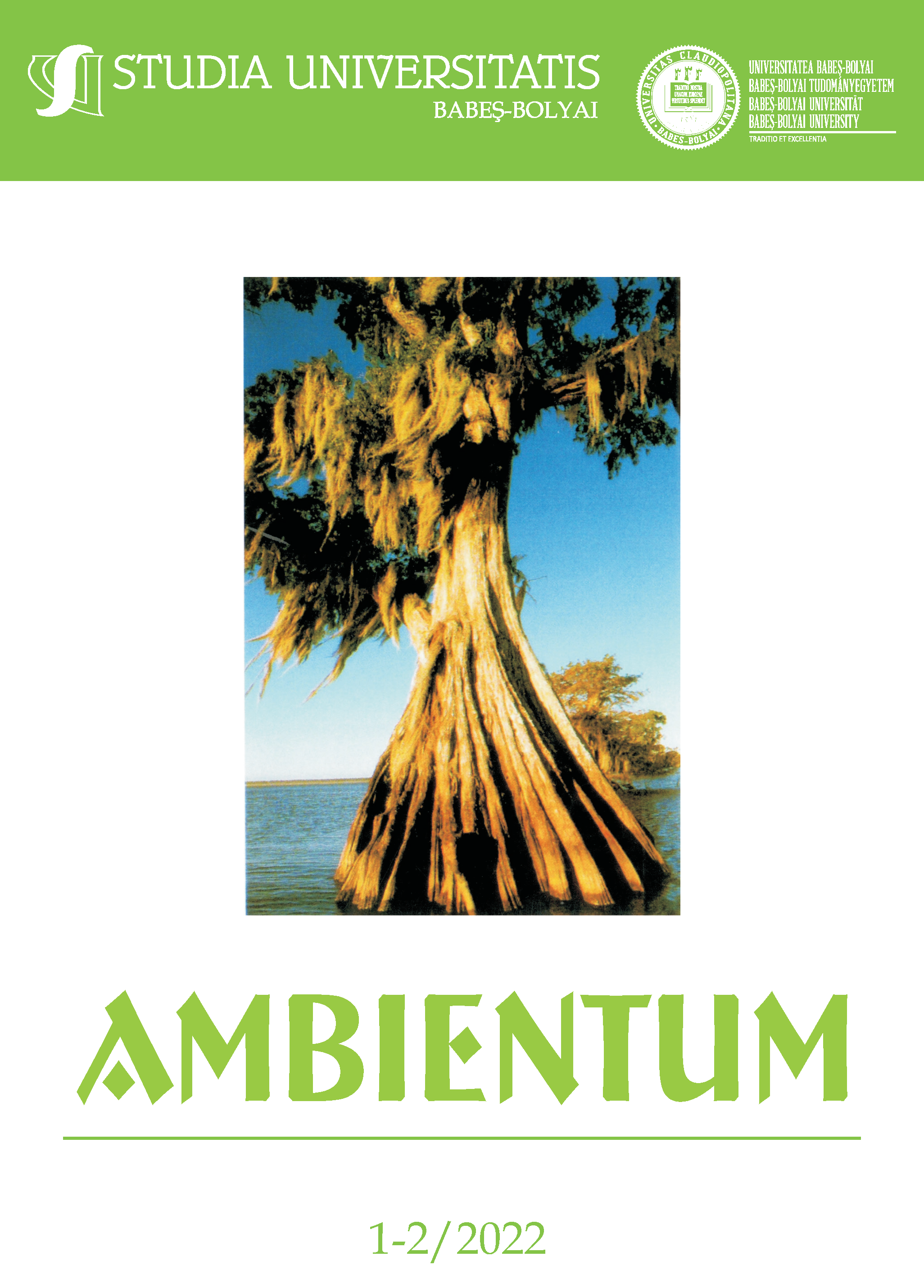Environmental assessment of nitrogen compounds in the surroundings of a fertilizers industrial plant
DOI:
https://doi.org/10.24193/subbambientum.2022.02Keywords:
nitrogen-based fertilizers, surface water pollution, soil pollutionAbstract
The present study was conducted in the proximity of a chemical plant from Târgu-Mureș (Romania), where nitrogen-based fertilizers were produced. The quality of the environmental components was assessed in terms of general physico-chemical parameters and the content of nitrogen dissolved ions (NO3-, NO2-). The nitrate content in soil varied depending on the distance from the source and land use at sampling point. The nitrite content was correlated with possible transformations from the nitrate forms. For water, special attention should be paid to the nitrate content from the industrial effluent, which in one sample proved to be higher than the national legislation.References
Commoner B., 1970, Threats to the Integrity of the Nitrogen Cycle: Nitrogen Compounds in Soil, Water, Atmosphere and Precipitation. In: Singer, S.F. (eds) Global Effects of Environmental Pollution. Springer, Dordrecht. https://doi.org/10.1007/978-94-010-3290-2_9.
Dayo-Olagbende G.O., Sanni K.O., Adejoro S.A., Afingba R.O., Ewulo B.S., 2022, Fate and form of nitrogen under different soil redox status. International Journal of Environment, Agriculture and Biotechnology, 7 (2), pp. 143-149.
Decision 352/2005 for approval of wastewater release conditions in water bodies.
EPA- Mureș (Environmental Protection Agency from Mureș County), Main pollution sources in Mureş County, data available online at https://www.apmms.ro/surse_poluare.shtml, accessed on 30 November 2022.
Jang C.S., Liu C.W., 2005, Contamination potential of nitrogen compounds in the heterogeneous aquifers of the Choushui River alluvial fan, Taiwan. Journal of Contaminant Hydrology, 79 (3-4), pp. 135-155.
Jenkinson D.S., 2001, The impact of humans on the nitrogen cycle, with focus on temperate arable agriculture. Plant and Soil, 228, pp. 3-15.
Kanu I., Achi O.K., 2011, Industrial Effluents and Their Impact on Water Quality of Receiving Rivers in Nigeria. Journal of Applied Technology in Environmental Sanitation, 1 (1), pp. 75-86.
LAQUA, 2015, Soil Nitrate Measurement for Determination of Plant-Available Nitrogen, available online at: ttps://www.horiba.com/usa/water-quality/applications/agriculture-crop-science/soil-nitrate-measurement-for-determination-of-plant-available-nitrogen/ accessed on 30 November 2022
Lupei T., Matei M., Laslo L., Nicolescu A. M., 2014, Study on the environmental pollution risks induced by the former Chemical Plant in Târnăveni, Mureş county. Ecoterra, 11(4), pp. 32-39.
Madhav S., Ahamad A., Singh A.K., Kushawaha J., Chauhan J.S., Sharma S., Singh P., 2019, Water Pollutants: Sources and Impact on the Environment and Human Health. In: Pooja, D., Kumar, P., Singh, P., Patil, S. (eds) Sensors in Water Pollutants Monitoring: Role of Material. Advanced Functional Materials and Sensors. Springer, Singapore. https://doi.org/10.1007/978-981-15-0671-0_4.
Madison R.J., Brunett L.O., 1984, Overview of the occurrence of nitrate in ground water of the United States. National Water Summary 1984 – Water Quality Issues, pp. 93-105.
Patriquin D.G., Blaikie H., Patriquin M.J., Yang C., 1993, On-Farm Measurements of pH, Electrical Conductivity and Nitrate in Soil Extracts for Monitoring Coupling and Decoupling of Nutrient Cycles. Biological Agriculture & Horticulture, 9 (3), pp. 231-272, DOI: 10.1080/01448765.1993.9754638.
Peigne J., Girardin P., 2004, Environmental Impacts of Farm-scale composting practices. Water, Air, and Soil Pollution, 153, pp. 45-68.
Pilegaard K., 2013, Processes regulating nitric oxide emissions from soils. Phil Trans R Soc B, 368: 20130126. http://dx.doi.org/10.1098/rstb.2013.0126.
Robson A.D., 1989, Soil Acidity and Plant Growth. Academic Press, Marrickville, Australia. 306 p.
Rotaru A., Răileanu P., 2008, Groundwater contamination from waste storage works. Environmental Engineering and Management Journal, 7 (6), pp. 731-735.
Serio F., Miglietta P.P., Lamastra L., Ficocelli S., Intini F., De Leo F., De Donno A., 2018, Groundwater nitrate contamination and agricultural land use: A grey water footprint perspective in Southern Apulia Region (Italy). Science of The Total Environment, 645, pp. 1425-1431.
Soldatova E., Guseva N., Sun Z., Bychinsky V., Boeckx P., Gao B., 2017, Sources and behaviour of nitrogen compounds in the shallow groundwater of agricultural areas (Poyang Lake basin, China). Journal of Contaminant Hydrology, 202, pp. 59-69.
Wrage N., Velthof G., van Beusichem M., Oenema O., 2001, Role of nitrifier denitrification in the production of nitrous oxide. Soil Biol. Biochem., 33, pp. 1723 – 1732, doi:10.1016/S0038-0717(01)00096-7.
Downloads
Published
How to Cite
Issue
Section
License
Copyright (c) 2022 Studia Universitatis Babeș-Bolyai Ambientum

This work is licensed under a Creative Commons Attribution-NonCommercial-NoDerivatives 4.0 International License.





 ISSN (online): 2065-9490 | ISSN (print): 1843-3855 | ISSN-L: 2065-9490
ISSN (online): 2065-9490 | ISSN (print): 1843-3855 | ISSN-L: 2065-9490